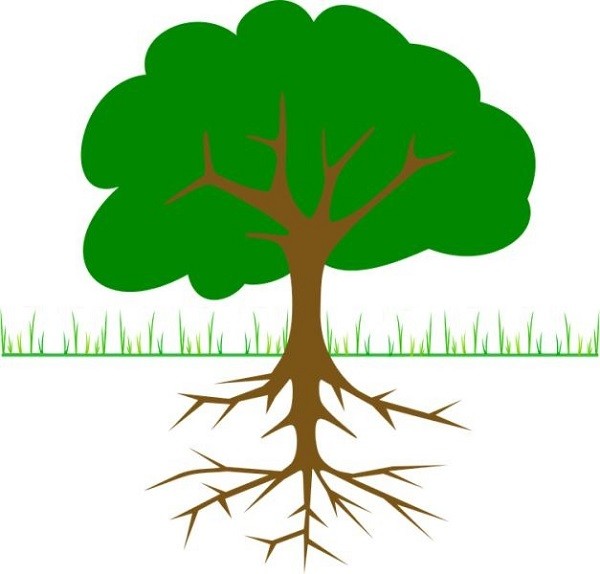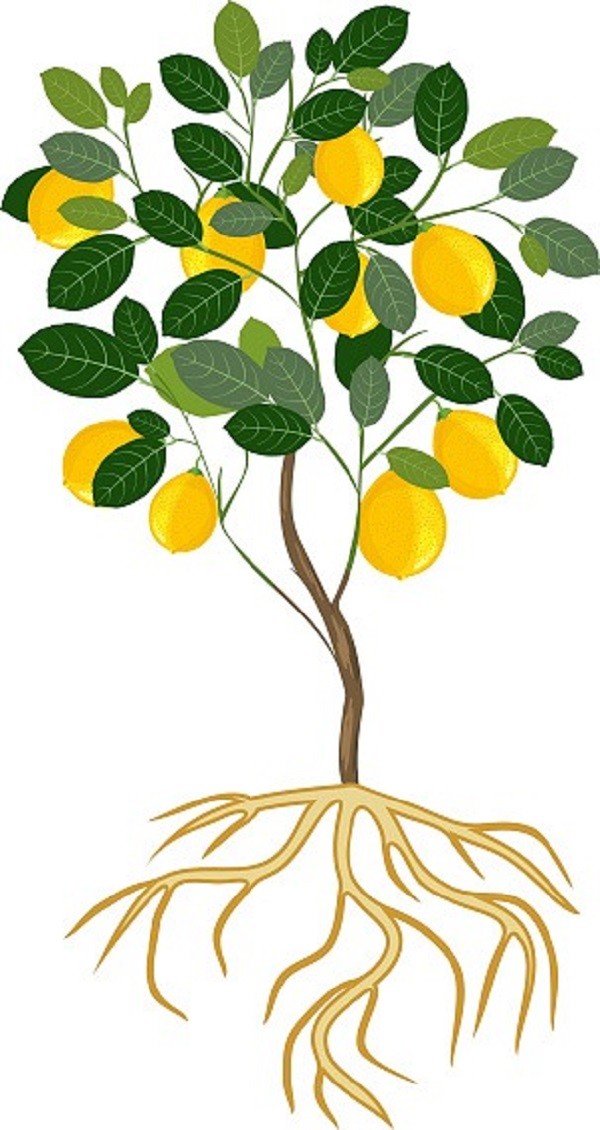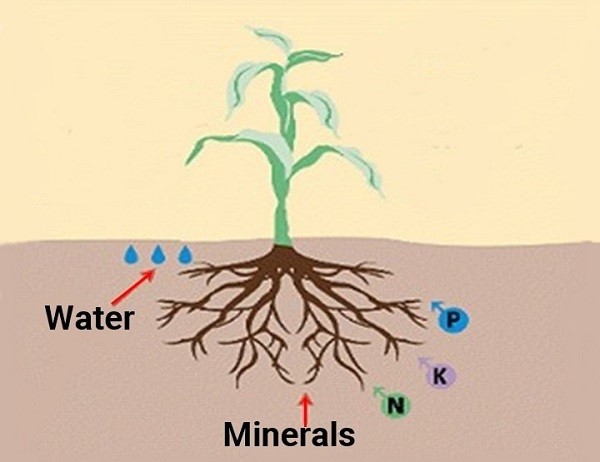No products in the cart.
NEWS
Understanding Fruit Tree Root Systems: Types, Functions, and Essential Care
Understanding the different types of root systems in fruit trees is a fundamental question for many growers. The root system plays a critical role throughout the tree’s life cycle – from initial growth and development to flowering and fruiting. This article, brought to you by the experts at Biogarden.Asia, delves into the common root types found in fruit trees and explores their vital functions in supporting plant growth and development.
What Types of Roots Do Fruit Trees Have?
Many growers often wonder about the specific types of roots found in fruit trees. Fruit trees most commonly and predominantly feature two main types of root systems, each with a distinct structure. While their specific forms differ, and their primary functions may vary, they are both crucial components working together to support the tree’s overall growth and vitality. Let’s explore these key root types in more detail.
Information on Taproots
A taproot system is characterized by a single, dominant root that grows straight downward and deeply into the soil. The length of the taproot varies depending on the specific tree species, but for fruit trees, the average depth typically ranges from 1 meter to 10 meters. This deep-growing root system is essential for anchoring the tree firmly in the ground, providing stability, and preventing it from toppling over, especially during strong winds.
Fruit trees with a well-developed taproot system have a significant advantage for healthy development. This deep penetration allows the tree to access water and nutrients from deeper soil layers, which is particularly beneficial during dry periods or droughts. Furthermore, deep roots are excellent for storing carbohydrates and other energy reserves that the tree can utilize during times of stress, such as drought or nutrient scarcity. Different fruit tree species require specific levels of nitrogen, phosphorus, and potassium for optimal growth. A deep taproot system effectively supports the tree’s access to these vital nutrients, enhancing its ability to thrive and survive even when surface conditions are challenging.
Finally, taproots provide an important protective function. Their depth can help shield the primary root structure from surface-dwelling pests and prevent damage from burrowing animals.
 Description of a fruit tree with a prominent taproot growing deep into the soil layer, illustrating its anchoring function.
Description of a fruit tree with a prominent taproot growing deep into the soil layer, illustrating its anchoring function.
Here are some examples of fruit trees known for their prominent taproot systems:
- Banana Trees: Banana plants develop a strong taproot system that helps absorb water and nutrients effectively from the soil. This root structure also provides crucial stability, supporting the plant in windy conditions.
- Coconut Trees: Coconut palms also feature a deep taproot system. This deep root allows them to withstand strong winds, which is vital in coastal environments, and helps them extract nutrients from sandy soils.
- Mango Trees: Mango trees are among the fruit trees with a well-developed and robust taproot system that penetrates deeply. The taproot enables efficient absorption of water and nutrients and provides stability, especially during periods of heavy rain and wind.
- Sapodilla Trees: Sapodilla trees tend to grow a deep taproot. This helps the tree access water and nutrients from deeper soil horizons, supporting better growth and resilience.
Information on Lateral (Horizontal) Roots
Lateral or horizontal root systems are characterized by roots that grow outwards, horizontally, typically spreading within the upper layers of the soil or close to the surface. The depth of this system commonly ranges from about 0.1 meters to 10 meters, but the majority of the root mass is concentrated in the shallower topsoil. Often, this system includes a main taproot that penetrates deeper, acting as an anchor and a secondary source for water and nutrients from lower soil profiles, particularly when surface moisture is limited. The numerous smaller lateral roots spread out horizontally to capture resources available in the upper soil layers.
In fruit trees with a predominantly lateral root system, the roots are generally shallow and make up the bulk of the root mass, while a taproot (sometimes called the “mother root”) may extend deeper. If surface water is insufficient for the tree’s needs, the taproot helps draw water from deeper levels.
 Illustration showing a fruit tree with a widespread, shallow lateral root system, indicating absorption near the soil surface.
Illustration showing a fruit tree with a widespread, shallow lateral root system, indicating absorption near the soil surface.
Here are some examples of fruit trees that often exhibit a significant lateral root system:
- Pineapple Plants: Pineapple plants typically have shallow lateral roots near the soil surface. This root structure is adapted to absorb water and nutrients from the immediate environment and can also facilitate the production of new plantlets (suckers) from these roots.
- Avocado Trees: Avocado trees are known for their lateral root systems. These roots commonly develop horizontally across or just below the soil surface, excelling at absorbing nutrients and water from the topsoil layer. Some avocado varieties can even develop roots from main branches, known as “aerial roots.”
- Jackfruit Trees: Jackfruit trees can also develop lateral roots close to the soil surface. These horizontal roots help the tree absorb nutrients from the surrounding soil and provide stability as the tree grows.
- Lime Trees: Lime trees often grow with a lateral root system. This contributes to the tree’s sturdiness, helping it stand firm and resist strong winds.
- Papaya Trees: Papaya trees possess roots that tend to grow laterally. This enables them to absorb many nutrients from the soil, promoting rapid growth and providing sufficient energy for growth and fruit production.
- Pomegranate Trees: Some pomegranate trees may exhibit a lateral root system, often with suckers (new shoots) developing around the base of the main plant. A lateral root system helps the pomegranate tree maintain stability and absorb nutrients more effectively from the soil.
- Plum Trees: When discussing fruit tree lateral roots, the plum tree is a classic example. Plum trees have a dense lateral root system that can spread widely and, in some cases, even cause damage to nearby structures like pavements.
The Vital Role of the Root System in Fruit Tree Growth and Development
Biogarden.Asia has explained the common types of fruit tree roots. Now, what are their specific roles in the tree’s growth and development? Let’s explore this further with our experts.
The root system is one of the foundational components contributing to a tree’s growth and development. Depending on soil conditions and the specific root system type a fruit tree possesses, its growth patterns and vigor can vary significantly.
For a tree’s leaves to develop quickly with healthy green chlorophyll, the tree must use its root system to absorb water and mineral nutrients like nitrogen and phosphorus. These nutrients are essential for the tree to produce proteins, chlorophyll, and generate molecular energy in the form of adenosine triphosphate (ATP).
 Image depicting roots absorbing water and nutrients from the soil, showing the vital process.
Image depicting roots absorbing water and nutrients from the soil, showing the vital process.
Additionally, substances like phosphorus are necessary components of DNA itself. When a new leaf is forming, water absorbed by the roots is transported upwards to supply it. Functionally, the entire tree operates much like a straw, with the root tips drawing water up from the soil.
The root system is an incredibly important vegetative organ of a plant. Its main functions include anchoring the plant firmly in the ground, absorbing water and mineral nutrients, and facilitating respiration. Beyond these primary roles, the root system also serves as a storage organ for nutrients and can be involved in vegetative reproduction of the plant.
How to Care for Fruit Trees Based on Root System Types
As discussed, the root system is extremely important for the growth and development of fruit trees. Therefore, providing the right nutrients and proper care for the roots is also crucial. Biogarden.Asia shares some essential tips for caring for fruit tree root systems.
Weeding and Soil Loosening
Regularly remove weeds and loosen the soil around the base of the tree. This eliminates competition for nutrients and water, removes potential hiding places for pests, and helps aerate the soil. Improved soil structure allows the root system to develop more freely and absorb resources without competition.
Fertilization
Applying fertilizer to fruit trees helps the roots absorb the nutrients necessary for growth, development, high yield, and good quality fruit.
- Choosing Fertilizer Type: You can apply various types of fertilizer depending on the tree species. Common options include organic fertilizers (manure, compost, poultry manure) and chemical fertilizers (NPK). Choose the type that best suits your preferences and growing conditions.
- Determining Fertilizer Quantity: The specific amount of fertilizer needed varies by fruit tree species. Refer to the instructions on the fertilizer packaging or consult with tree cultivation experts (like those at Biogarden.Asia) to determine the correct dosage. Keep in mind that the required amount depends on the tree type, age, and size, as well as the soil and environmental conditions.
- Timing of Fertilization: Different fruit tree varieties have specific fertilization schedules. However, fertilizer is commonly applied during spring and autumn. In spring, fertilization supports strong root absorption and vigorous tree development in preparation for flowering and fruiting. In autumn, fertilization helps the roots absorb and store nutrients to prepare for the winter period.
- Fertilization Method: You can measure out the required amount of fertilizer and spread it around the base of the tree, ensuring you avoid direct contact with the trunk and main roots. After applying fertilizer, it’s beneficial to lightly mix it into the soil or ensure it is evenly distributed around the root zone.
Regular Watering
Consistent watering is necessary to ensure the tree has sufficient water to dissolve and transport nutrients. This makes it easier for the root system to absorb water and move nutrients upwards to supply the rest of the tree. Therefore, water plays a vital and closely related role in the growth and development of fruit trees.
Biogarden.Asia has helped answer the question of what types of roots fruit trees have. The useful information provided here can hopefully offer you new knowledge in the field of tree cultivation. We hope this information clarifies your questions and provides fresh insights into the world of fruit trees.



